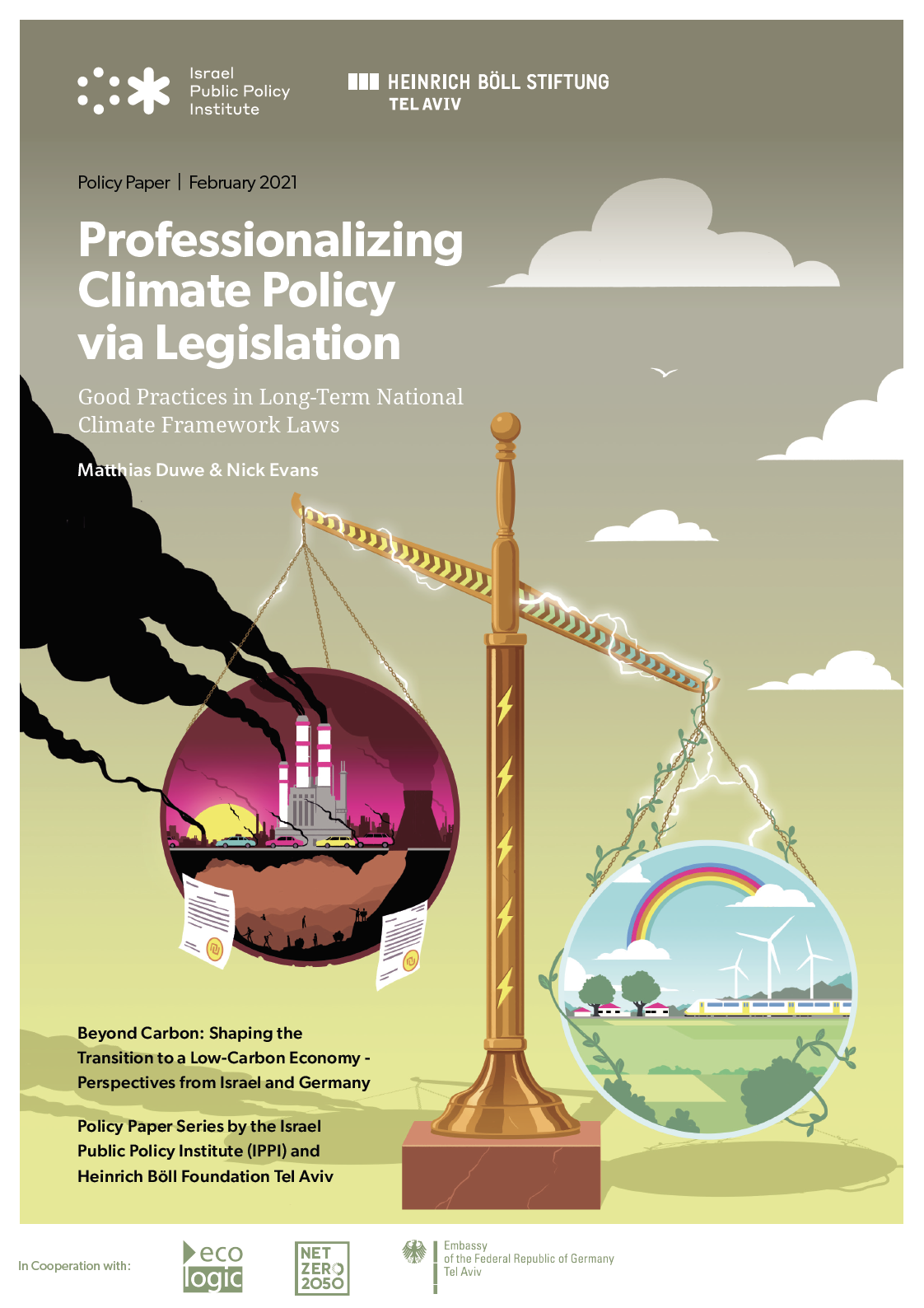Good Practices in Long-Term National Climate Framework Laws

Share this Post
Authors: Matthias Duwe and Nick Evans
Working towards a National Climate Framework Law in Israel
Charting a course towards net-zero emissions by mid-century is a mammoth task for the world’s economies and represents an unprecedented management challenge for governments. Urgent policy changes in the short-term are required to curb greenhouse gas (GHG) emissions but must be designed and implemented with long-term direction in mind.
To this end, framework climate laws have emerged as key governance tools for managing the transition towards climate neutrality and reconciling action in the short-term with emission reduction objectives for 2050 or beyond. Such laws establish an overarching framework for organizing action, assigning responsibilities and setting targets, and thus not only signal but operationalize the long-term resolve of national governments when it comes to climate action.
While climate laws are as varied as their national contexts, many share a set of six common core design elements:
- Emission-reduction targets;
- Processes for strategic long-term planning and/or short-term policy-making;
- Progress monitoring;
- Institutional arrangements;
- Avenues for public participation;
- Scientific advisory bodies.
Using these shared elements to structure the analysis, this policy paper identifies 20 good practice examples from a set of ten national climate framework laws in OECD countries (all also EU Member States), which have a long-term (mid-century) outlook. Its findings can serve as a guide for governments that are in the process of designing, or redesigning, their own climate governance systems, especially if they are considering or in the process of drafting dedicated framework legislation.
Key Takeaways:
- The climate crisis demands an effective governmental response.
- Professional and effective climate crisis management requires clear responsibilities and procedures.
- Establishing a national climate governance system in the form of law makes the system stronger and signals sincerity.
- Almost two-thirds of OECD countries already have or are debating a national climate framework law.
- Of the climate laws analyzed, most include a set of core elements: targets, planning and policies, progress monitoring, institutional responsibility, external advice, and public participation.
- Many good practices are in place in the existing laws, which can serve as a resource and inspiration.
- Political support is a key underlying factor, which helps make the laws resilient to changes in government or other political or economic developments.
- Public participation does not feature explicitly in several of the laws analyzed, although societal support is an essential ingredient to successful socio-economic transition.
————————————————————————————————————————————————–
The Israel Public Policy Institute (IPPI) serves as a platform for exchange of ideas, knowledge and research among policy experts, researchers, and scholars. The opinions expressed in the publications on the IPPI website are solely that of the authors and do not necessarily reflect the views of IPPI.
Download Full Publication
Policy Paper - Professionalizing Climate Policy by Matthias Duwe and Nick Evans

Share this Post

What are quantum computing and quantum communication?
As far as technology hype cycles go, ‘quantum’ is on its way to quickly outpacing prolific buzzwords such as ‘artificial…

The Quantum Internet: A Network for All?
From optimizing production in manufacturing, to allocating hospital beds, to operating door entry systems of smart buildings, the…

Digital Campaigns’ Trends in the General Elections for the 24th Knesset
Introduction: Algorithmic Campaigns Social media platforms have significantly changed the ways in which political campaigns are run, due…
